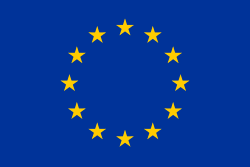Europeiska unionens regionalpolitik
Europeiska unionens regionalpolitik, även känd som sammanhållningspolitiken, är ett av Europeiska unionens befogenhetsområden. Den syftar till att upprätthålla ekonomisk, social och territoriell sammanhållning inom unionen genom att stödja utvecklingen i utsatta regioner. Målet är att på så sätt stimulera ekonomisk tillväxt, skapa fler jobb och öka livskvaliteten inom Europeiska unionen.[1][2] Sammanhållningspolitiken inrättades genom europeiska enhetsakten den 1 juli 1987 som en motvikt till den inre marknadens öppna gränser.[3]
En viktig del av regionalpolitiken är de europeiska struktur- och investeringsfonderna, särskilt Europeiska regionala utvecklingsfonden, Europeiska socialfonden och Sammanhållningsfonden, som alla stöder olika typer av investeringsprojekt för att uppnå regionalpolitikens syfte och mål.
Se även
- Europeiska unionens befogenhetsområden
- Gemensamma jordbrukspolitiken
- Regionalpolitik
- Europeiska regionkommittén
- Assembly of European Regions
- Europarådets kommunalkongress
- Europeiska ekonomiska och sociala kommittén
- Nätverket för regionala lagstiftande församlingar
- Rådet för kommuner och regioner i Europa
Referenser
| EU-portalen – temasidan för Europeiska unionen på svenskspråkiga Wikipedia. |
Media som används på denna webbplats
The Flag of Europe is the flag and emblem of the European Union (EU) and Council of Europe (CoE). It consists of a circle of 12 golden (yellow) stars on a blue background. It was created in 1955 by the CoE and adopted by the EU, then the European Communities, in the 1980s.
The CoE and EU are distinct in membership and nature. The CoE is a 47-member international organisation dealing with human rights and rule of law, while the EU is a quasi-federal union of 27 states focused on economic integration and political cooperation. Today, the flag is mostly associated with the latter.
It was the intention of the CoE that the flag should come to represent Europe as a whole, and since its adoption the membership of the CoE covers nearly the entire continent. This is why the EU adopted the same flag. The flag has been used to represent Europe in sporting events and as a pro-democracy banner outside the Union.